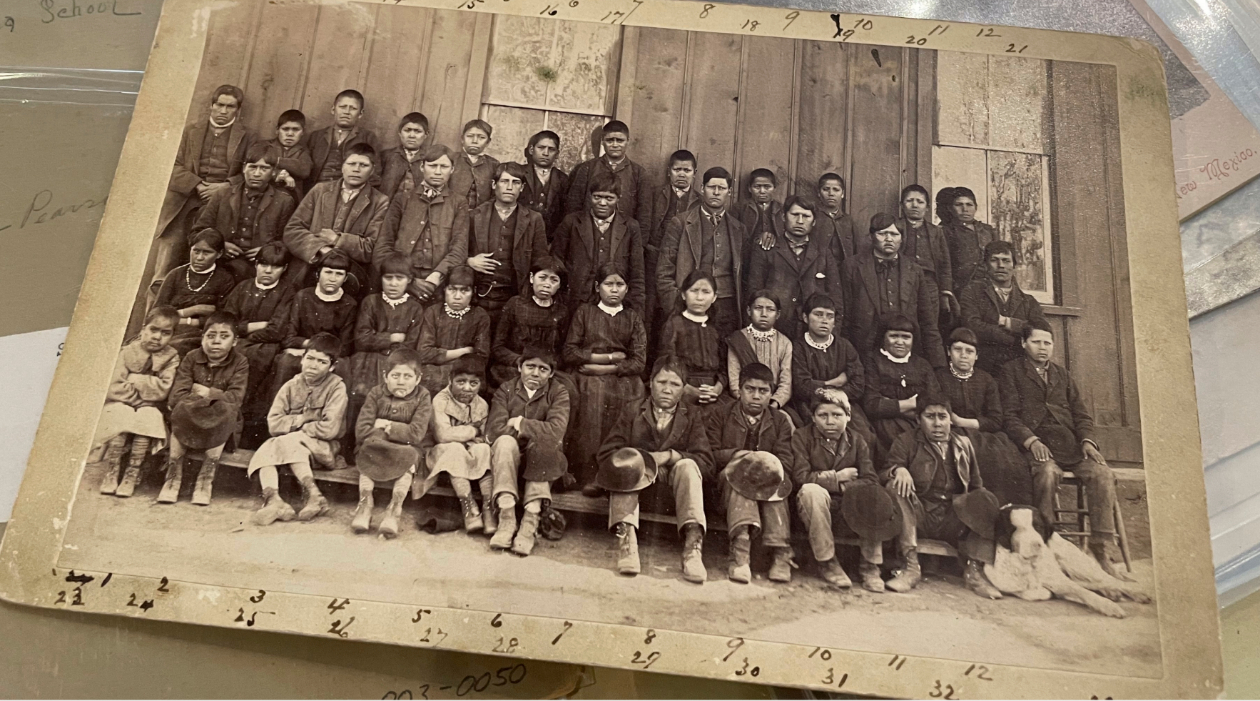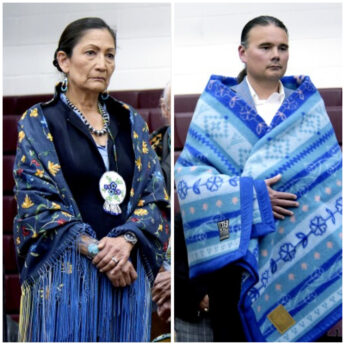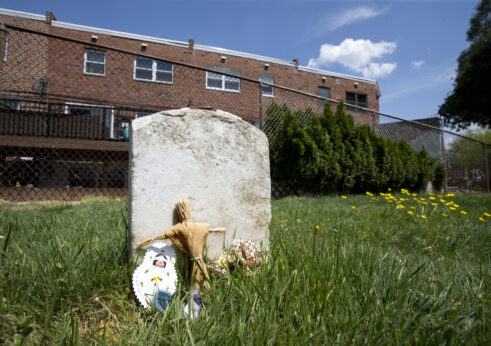
The recent Federal Indian Boarding School Initiative Investigative Report has garnered mixed responses, ranging from being characterized as “monumental” to being said to “leave key questions unanswered.” I would agree with both assessments, but would not fault the report with criticism.
It indeed is “monumental” in that it is the first report of its kind in which the U.S. government admits responsibility for the 150-plus years of atrocities committed against Indigenous children in its boarding school “hellholes.” On the other hand, there remain key unaddressed issues, but this is just volume one of the investigation’s findings, and subsequent reporting may provide more answers.
The sheer quantity of the work involved with producing the report was enormous; the research involved reviewing 98.4 million sheets of paper on Federal Indian boarding schools—records, testimony, and other documents.

This first volume of the report, which is over 100 pages long, has already circulated around the world. It was submitted by Bryan Newland (Bay Mills Indian Community—Ojibwe), Assistant Secretary for Indian Affairs. This investigation of the Federal Indian Boarding School system was initiated by U.S. Secretary of Interior Deb Haaland (Laguna Pueblo) in the wake of the finding of hundreds of unmarked graves in Canada at former residential Indian schools in June 2021. The report covers not just U.S. Indian nations and Alaska Native Villages, but also the Native Hawaiian Community.
The National Native American Boarding School Healing Coalition (NABS), which advocates for boarding school survivors, also assisted in compiling the report. NABS is also pushing for the reintroduction of a bill in Congress to address the matter, a piece of legislation called the Truth and Healing Commission on Indian Boarding School Policies in the U.S. Act.
The report states that the U.S. government operated or supported 408 boarding schools in 37 states from 1819 to 1969, including 21 schools in Alaska and seven in Hawaii. So far, 500 graves (characterized as just “The Tip of the Iceberg” in the document) have been found connected to 53 burial sites at various school locations. The Interior Department expects the number of marked and unmarked graves of children to rise into the “thousands or tens of thousands,” however, as the investigation progresses. Estimates run as high as 40,000 possible graves, indicating a huge number of children perished in these infernos of genocide.
The U.S. goal: Indigenous dispossession
Most eye-opening in the report is the admission that the boarding school system was directly aimed at taking Indian land, by an insidious, perfidious scheme that used so-called “education” as a cover. It was a prime vehicle for the dispossession of Native people, within the framework of settler colonialism. The main goal of the boarding school system was separating Indigenous people from Indigenous land. This is supported by an opening statement of the Initiative, given by Newland, which reads as follows:
“This report places the Federal boarding school system in its historical context, explaining that the United States established this system as part of a broader objective to dispossess Indian Tribes, Alaska Native Villages, and the Native Hawaiian Community of their territories to support the expansion of the United States.”
This is a profound statement and lays the groundwork for the rest of the report. The overall goal of the boarding school system was to take Indian land by assimilation (cultural genocide), on the one hand, and the outright genocide (physical erasure) of Indigenous children on the other.
Further cited in the Initiative’s report, in regard to Indian territorial dispossession, is the Kennedy Report of 1969, which held that Federal Indian boarding schools “were designed to separate a child from his reservation and family, strip him of his tribal lore and mores, force the complete abandonment of his native language, and prepare him for never again returning to his people.”
The forcible assimilation—i.e. cultural genocide—implied the eventual absorption of the Native population into the non-Indian population. And with physical genocide, the Native population would be physically erased over time. Hence, the boarding system was a double-edged sword of genocide.
This system was seen by the U.S. government as a means for taking of Indigenous homelands. The cultural and physical genocide of Native children was directed at generations of Native Americans who would either be assimilated or decimated. Hence, the goal of dispossession would be realized.
Starvation as a weapon
Another point brought out in the Initiative’s report, but perhaps not so well known among the broader population in the U.S., was the practice of withholding food rations from families who would not submit their children to be carried off to the heinous schools. This writer was aware of this abominable practice but only became aware that this genocidal measure was actually enacted into law thanks to the report.
Shockingly, by the Act of March 3, 1893, Congress authorized the Secretary of the Interior to withhold rations, which were guaranteed by treaties, from Native families whose children did not attend the schools. An organization of white church leaders, social reformers, and government officials—the misnamed Friends of the Indian, formed in 1883—provided cover for the policy, stating that starvation was a proper punishment for Native families who refused to recognize “what was good for them.”
Families were threatened with starvation or starved into submission once dependency on government-supplied food was established on the reservations. This was inhuman, using starvation as a weapon to procure children. The U.S. government must be held accountable for its crimes.
Intergenerational health legacy of the schools
Also not widely known, but addressed in the findings, is the intergenerational long-term health effects on the families of boarding school survivors. Indigenous childhood school experiences fostered negative health impacts on adults who had been boarding school attendees. Studies show that American Indians who attended boarding schools have lower physical health levels than non-attendees.
Indigenous boarding school children had a 44% greater count of past-year chronic physical health problems (PYCPHP) when reaching adulthood than adult non-attendees. Adults who were attendees were more likely to have cancer (more than three times), tuberculosis (more than twice), and were also more likely to have high cholesterol, diabetes, anemia, and gall bladder disease than non-attendee adults. Other research indicated that now-adult attendees experience increased risk of PTSD, depression, and unresolved grief.
The further result, according to descriptions from survivors, was a “prevailing sense of despair, loneliness, and isolation from family and community.” The report asserts that stressors from boarding school experience can produce “epigenetic alterations” that are then transferred to the children of attendees, a process known as “epigenetic inheritance.” The trauma, then, became an inheritance passed down through generations.
The report also references the Running Bear studies of 2019, funded by the National Institute of Health, authored by Dr. Ursula Running Bear, et al., entitled “Boarding School Attendance Response and Physical Health Status of Northern Plains Tribes,” which reinforce the assertion that Federal Indian boarding school policies “often impacted several generations, “leading to an intergenerational pattern of cultural and familial disruption under the direct and at times indirect support by the U.S. government of Federal and non-Federal entities.”
This research was the first medical study to systematically and quantitatively prove that the Federal Indian boarding school system continues to negatively affect the health of adult boarding school survivors and their descendants.
The rest of the report details the abuse, the punishment for speaking Indigenous languages and any observance of cultural traditions, and the overall abhorrent conditions which Native children found themselves subjected to in these hellish versions of Dante’s Inferno.

Again, this is only the first volume of the report, and more is expected to be uncovered. The second volume will be supported by a $7 million appropriation from Congress extending through fiscal year 2022. Newland is recommending that this next volume include a list of marked and unmarked burial sites at all Federal boarding schools, with the names, ages, and tribal affiliations of the children who attended those sites. The department also is requesting the disclosure of the approximate number of children who attended the boarding schools.
Among the other recommendations submitted by Newland are the continuance of the full investigation, identifying surviving Federal Indian Boarding School attendees, the documenting of school attendee experiences, and the promotion of Indian health research. Also, it is proposed that the department support an express policy of cultural revitalization, buttressing the efforts of Indigenous nations, the Alaska Native Villages, and the Hawaiian Native Community to revitalize their languages, cultural practices, and traditional food patterns.
Additionally, the report examines the part played by white religious organizations in the system and the overall role of the federal government in these barbaric, racist institutions that in many respects—given the paucity of food, the constant overwork, the lack of medical care, and the severity of punishment for the slightest infractions—were similar to the Nazi death camps of World War II. The key difference was that these were reserved for children and stretched out their horrors over time, but the objective was largely the same: genocide.
Boarding schools in historical context
Genocide as a concept has developed and evolved over the decades and must be updated and analyzed to concretely apply it to what happened over a century and a half in the Indian boarding schools at the hands of successive U.S. settler colonialist regimes of the 19th and 20th centuries.
The U.S. boarding school system meets the definition of genocide established by the United Nations General Assembly’s Convention on the Prevention and Punishment of the Crime of Genocide. Article II of the Convention reads as follows:
“In the present Convention, genocide means any of the following acts committed with intent to destroy, in whole or in part, a national, ethnical, racial, or religious group, as such:
(a) Killing members of the group;
(b) Causing serious bodily or mental harm to members of the group;
(c) Deliberately inflicting on the group conditions of life calculated to bring about its physical destruction in whole or in part;
(d) Imposing measures intended to prevent births within the group;
(e) Forcibly transferring children of the group to another group.”
Throughout the short tenure of the United States on the stage of world history, all of the above prohibited five acts have been utilized by the federal government against the Indigenous peoples of this land.
Section (e) of Article II directly applies to the Indian boarding schools—the forcible transferring of the children of one group, Indigenous Americans, to another group, white Americans. This involves by definition, not necessarily physical or biological destruction (although there was physical destruction in the boarding schools, judging by the huge numbers of Native children who perished), but rather the destruction of the group as a cultural and social unit.
This typically occurs when children of the protected, victimized group are transferred to the perpetrator group. In the boarding school case, the goal of the U.S. was to “de-Indianize” the children and make them into carbon copies of white America, in effect a transferal to the perpetrator group. It amounted to the destruction of Native Americans as a distinct cultural and social entity. The children were given European names. The intent was to strip them of their culture, use them for manual labor, and transform them into “brown-skinned white folks,” at least the ones who survived the excruciating gauntlet of the horrendous boarding schools.
Oliver La Farge, the noted writer, scholar, and Indian rights advocate, condemned the boarding schools as “penal institutions…where little children were sentenced to hard labor for a term of years….” Only in the 1930s were children in the boarding schools even given enough food to alleviate starvation and had their hours of drudgery reduced. The Meriam Report of 1928, referenced in the investigation, found that boarding school children were cruelly starved on a diet of nine cents a day per child, received minimal medical care, were overcrowded, mercilessly overworked, and subjected to severe discipline.
As late as 1969, the Kennedy Report noted, that sexual, physical, and emotional abuse were prevalent, as were disease, malnourishment, overcrowding (at some schools there were two to three children sleeping in one bed), and lack of health care. This was well-documented.
Clearly, the boarding schools met the criteria of genocide in their ignominious attempt to exterminate an entire people. Genocide does not require that a people have been totally annihilated, but only that steps have been taken with that apparent objective in the mind of the perpetrator.
Hitler’s inspiration

In conclusion, it is relatively well known that Adolf Hitler was inspired in his genocide of the Jewish people by the U.S. genocide of Native Americans. Hitler was very familiar with the abominable conditions imposed on Indigenous people by the U.S. settler colonialist state.
He praised the way that “Aryan” America had conquered “its own continent” by clearing the land of “natives” and remarked approvingly of how the United States had “gunned down the millions” of Indians to a “few hundred thousand, and now keep the modest remnant under observation in a cage.”
Hitler envisioned Nazi Germany as a settler colonialist state expanding eastward in the same vein as the United States had expanded west.
After considerable reflection, this writer has little to no doubt that Hitler was aware of the horrendous treatment of Native children in U.S. boarding schools and used this as a model for the internment of Jewish people and others in his genocidal concentration camps.
There must be recompense for the horrendous crime of genocide and its long term effects. There must be additional reflective recommendations to provide redress for over a century and a half of boarding school genocide and its ongoing legacy.
This is an issue that will continue to be covered as more developments emerge.










